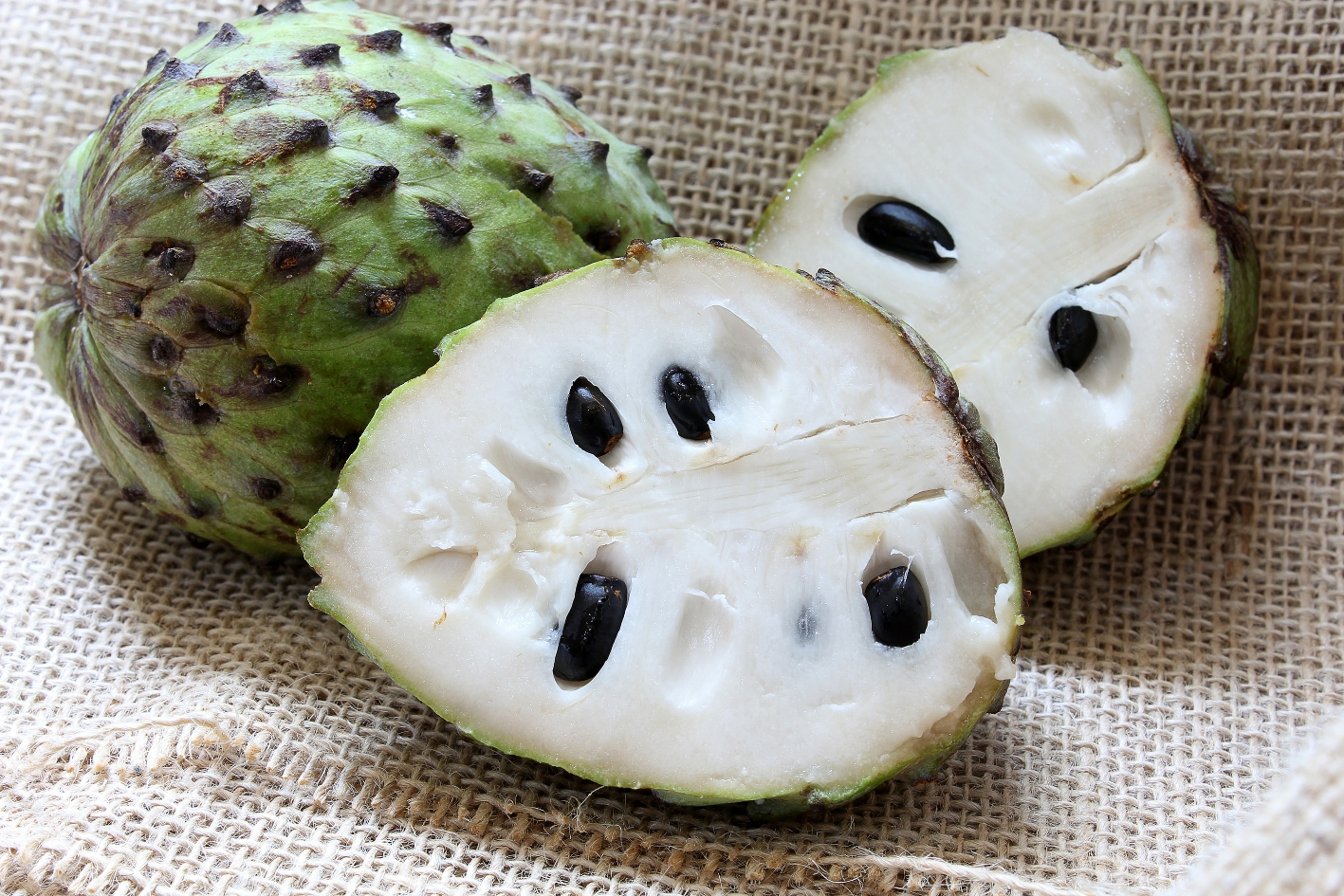
A true taste of the tropics
" The atemoya's juicy texture makes it a refreshing treat "
A unique, delicious tropical fruit, atemoya was created by crossing sugar-apple (Annona squamosa) and cherimoya (Annona cherimola). Both parent fruits are native to the ‘American’ tropics (ie. the Caribbean). They belong to the Annonaceae family, renowned for fragrant, flavourful produce. Although atemoya is widely enjoyed in various parts of the world, it is particularly popular in Taiwan. Here it is commonly referred to as the “pineapple sugar apple”. A misleading name as it incorrectly suggests atemoya is a hybrid of sugar-apple and pineapple.
The atemoya was first developed in 1908 by horticulturist PJ Wester in the USA. The sugar-apple, known for its intense sweetness, with the creamy-textured cherimoya, created a fruit that combines the best qualities of both.
Atemoya fruits are typically heart-shaped or rounded. The green, slightly bumpy skin which bruises easily resembles that of the sugar-apple. Despite its somewhat tough exterior, the fruit is soft and easily broken open, revealing luscious, creamy-white flesh.
The flavour is a delightful fusion of tropical notes: sweet with subtle hints of vanilla, pineapple, and citrus. The atemoya’s juicy texture makes it a refreshing treat. Enjoy it fresh or incorporated into smoothies, desserts, and even savoury dishes. When really ripe the fruit can be scooped out of the shell and enjoyed.
Atemoya is not only delicious but also highly nutritious. An excellent source of vitamin C, which boosts the immune system it provides a good amount of dietary fibre, aiding digestion. Additionally, it contains essential minerals such as potassium and magnesium, which contribute to heart health and muscle function. Low in fat and free from cholesterol, atemoya is a healthy choice for those looking to enjoy a naturally sweet indulgence.
This tropical hybrid thrives in warm, humid climates and is grown in countries such as Taiwan, Thailand, Israel, and parts of South America. While it can tolerate some cold, frost can damage the fruit and tree. Typically harvested in late summer and autumn atemoya is the perfect seasonal delicacy in many regions. Interesting fact: the atemoya flowers need to be hand pollinated.
Given the opportunity to try this extraordinary combination, don’t hesitate. You’ll get a true taste of the tropics!
Prepared by a Chaîne News Online Staff Writer
Researched from various sources. E&OE